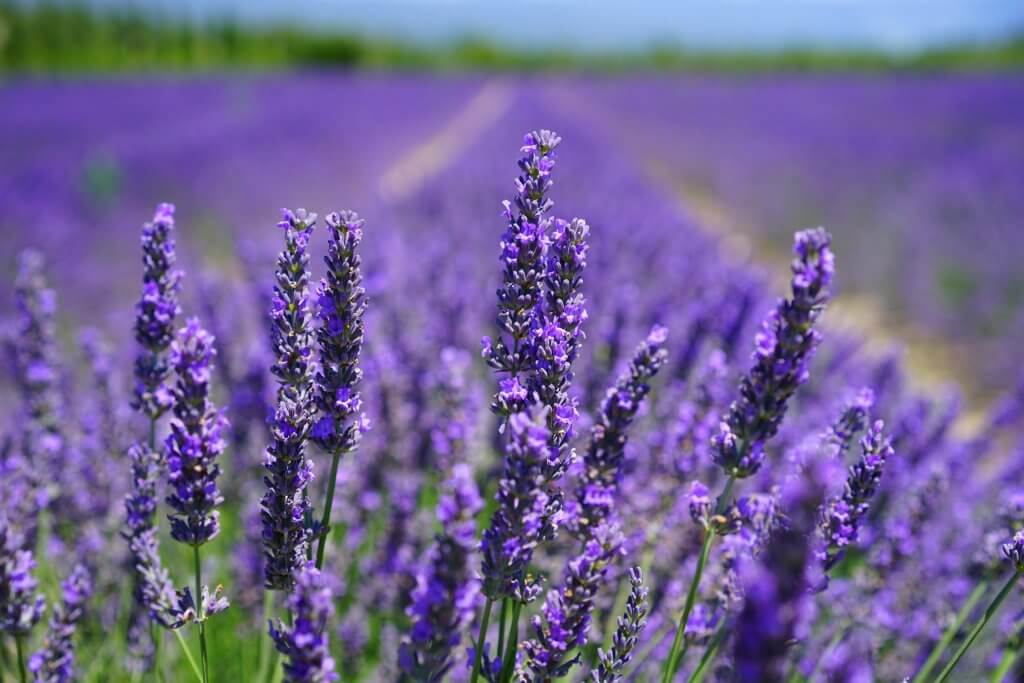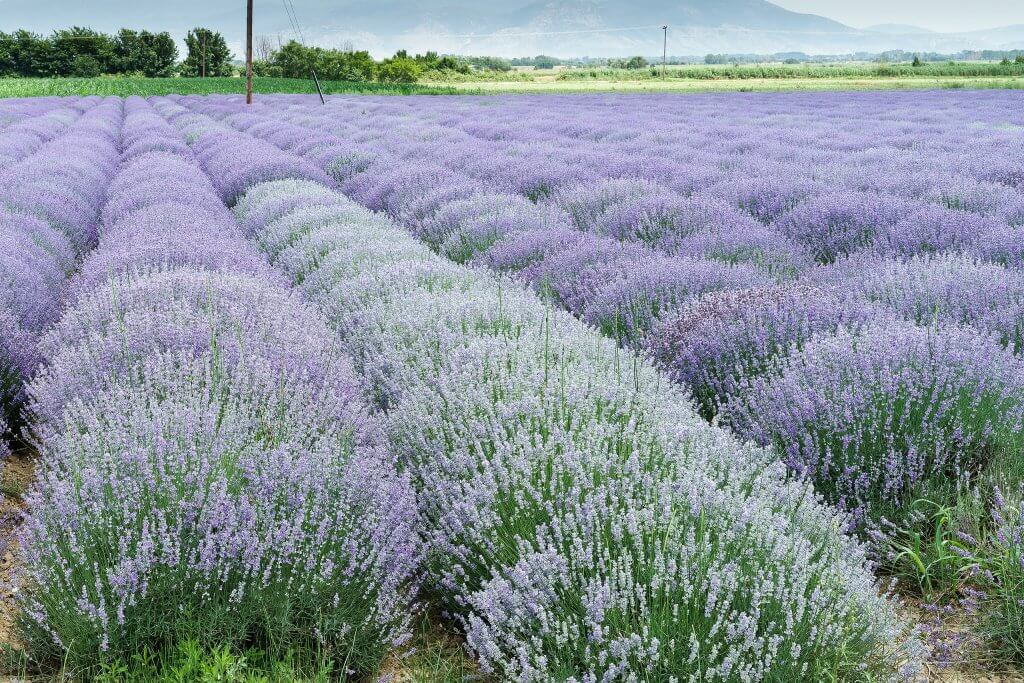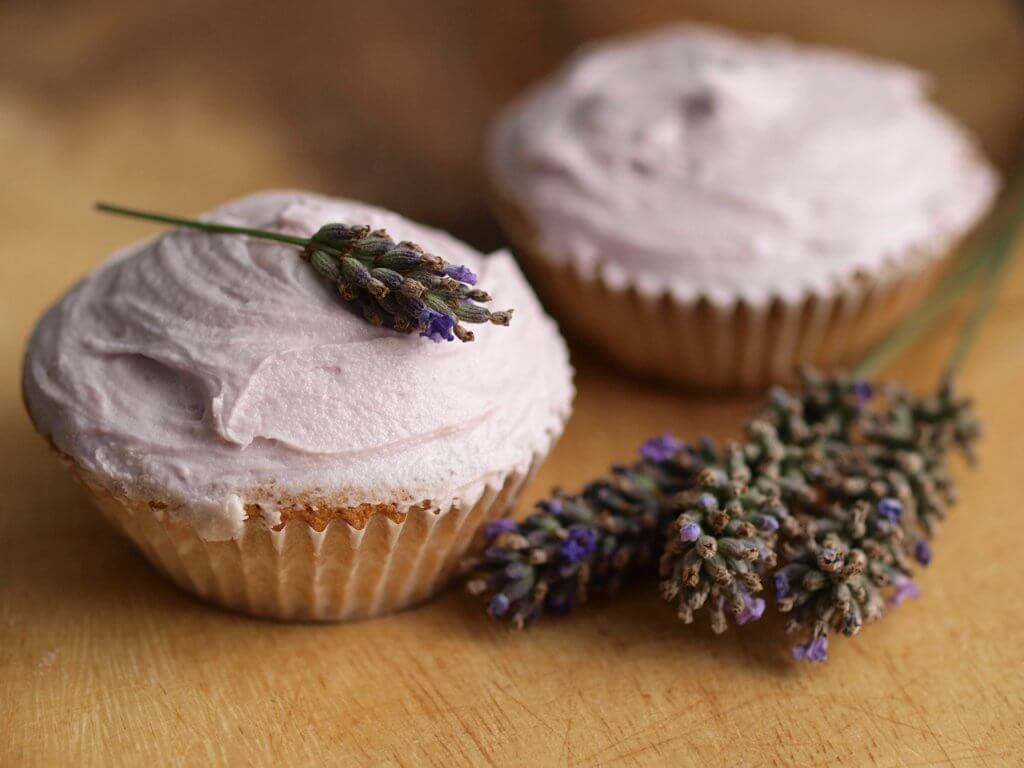Lavender (Lavandula) is a widely popular and commonly cultivated member of the mint family. It consists of over 40 species of perennial, flowering plants, including the popular Lavandula angustifolia, or ‘English Lavender’. Lavender is native to large areas of the Mediterranean, North Africa, central Europe and many Atlantic islands, including Cape Verde.
You will usually find lavender growing within small dense shrubs that can reach almost 90cm in height. Depending on the particular species, leaves may be lightly serrated or long and thin with a layer of fine hairs. The aromatic, essential oils are usually obtained from the leaves. The recognisable purple flowers circle the stem in layers reaching almost 10cm in length. You will usually see lavender growing in shades of violet and lilac, however some white and pink varieties do exist.
It has a long history of being cultivated for its medicinal and culinary values. From fragrant essential oils in the cosmetics industry, to a cure for insomnia or restlessness.

Cultivation and History of Lavender
Lavender has been cultivated since the 14th century. First as a medical herb, then by the 17th century, it was harvested for use in perfume distilleries. English Lavender is the most commonly cultivated species. Lavender can be grown within great fields, notable areas being Provence in France. Here the fields are world famous for their immense sizes and beauty. Due to its delicate structure, lavender farms usually harvest the lavender by hand.
Generally the appearance of wild lavender is quite welcome however some cultivated varieties have ‘escaped’ and spread within the wild. Many people consider lavender an invasive weed within some parts of Australia.
To grow your own lavender, choose a location that receives full sun throughout the day. You must also ensure the soil is well draining and not too moist. You can grow lavender from seed, or buy an established plant from a local garden center. If you are growing lavender seeds, be prepared to wait up to 2 months for seedlings to appear. It is best to start the seeds indoors in winter, then transplant to the garden during spring.
Harvest lavender stems when roughly half of the buds have opened. Collecting during the morning is best as the oils will likely be more concentrated. Tie small bundles together and leave to dry in a cool dark place.

Is Lavender toxic?
You can safely consume lavender within small amounts in food and herbal remedies. If you are using essential oils or topical products, avoid using them with small children. Lavender may cause adverse hormonal effects in young boys, and may be poisonous to young children. If you are pregnant or breast feeding, it is best to avoid consuming lavender. This is because its effects on the body have not been fully researched.
Uses
Culinary uses of Lavender
Add lavender buds and leaves to salads, pastas and desserts for a fragrant hint of sweet lemon. It can give your custards, sorbets or cakes a delicate flowery flavor. You can also use them to add a depth of aromatic flavor to stews and savoury sauces. The flowers can also be candied, or used to decorate sweet, desserts and drinks. A herbal lavender tea is also commonly drank.
Lavender honey is also a popular product. It is said that Queen Elizabeth coveted lavender honey, encouraging its popularity throughout England.

Products created with Lavender
Cosmetics, perfumes and soaps are frequently fragranced with lavender oil. Its distinguishable aroma has a relaxing and calming effect. You can also create lavender sachets or pouches with dried lavender. Keep these within a drawer of clothes or a wardrobe for your clothes to carry a hint of lavender scent.
Medicinal uses of Lavender
Lavender has an extensive history of use. Ancient Romans once used the fragrant herb to sooth insect bites and to repel insects. It was also recognised as a potential relief for nervousness, depression and anxiety. Lavender oil products are often used by sufferers of anxiety to soothe their symptoms.
Did you know…
The ancient Romans used lavender when bathing, washing clothes and to scent their beds and hair.
Conclusion
Your garden wouldn’t be complete without a variety of lavender perching within a border or proudly displayed in a container. It is extremely attractive to bees and pollinators which can greatly benefit your other plants, particularly vegetables. Whilst you may be familiar with lavender scented soaps, instead, try experimenting with lavender in your kitchen too. Using your own dried lavender to create lavender scones or your own fragrant ice-cream. It has a great number of possibilities!
—————Written by Hannah Sweet
Hannah is a freelance writer and graphic designer from the UK. With a penchant for travelling, photography and all things botanical, she enjoys writing about a wealth of topics and issues, from conservation and slow living, to design and travel. Learn more about her writing and design services at www.sweetmeanders.co
Many of our readers find that subscribing to Eat The Planet is the best way to make sure they don't miss any of our valuable information about wild edibles.
See our privacy policy for more information about ads on this site






